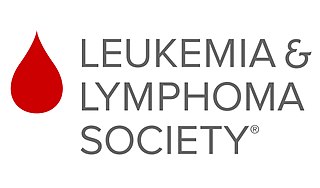
Leukemia, also spelled leukaemia, is a group of blood cancers that usually begin in the bone marrow and result in high numbers of abnormal blood cells. These blood cells are not fully developed and are called blasts or leukemia cells. Symptoms may include bleeding and bruising, feeling tired, fever, and an increased risk of infections. These symptoms occur due to a lack of normal blood cells. Diagnosis is typically made by blood tests or bone marrow biopsy.

Chronic lymphocytic leukemia (CLL) is a type of cancer in which the bone marrow makes too many lymphocytes. Early on there is typically no symptoms. Later non-painful lymph node swelling, feeling tired, fever, night sweats, or weight loss for no clear reason may occur. Enlargement of the spleen and low red blood cells (anemia) may also occur. It typically worsens gradually over years.

Tumors of the hematopoietic and lymphoid tissues or tumours of the haematopoietic and lymphoid malignancies are tumors that affect the blood, bone marrow, lymph, and lymphatic system. As those elements are all intimately connected through both the circulatory system and the immune system, a disease affecting one will often affect the others as well, making myeloproliferation and lymphoproliferation closely related and often overlapping problems.

The Leukemia & Lymphoma Society (LLS), a 501(c)(3) charitable organization founded in 1949, is the world's largest voluntary health organization dedicated to fighting blood cancer. The LLS's mission is: cure leukemia, lymphoma, Hodgkin's disease and myeloma, and improve the quality of life of patients and their families. LLS funds blood cancer research around the world, provides free information and support services and is the voice for all blood cancer patients seeking access to quality, affordable, coordinated care.
Acute leukemia or acute leukaemia is a family of serious medical conditions relating to an original diagnosis of leukemia. In most cases, these can be classified according to the lineage, myeloid or lymphoid, of the malignant cells that grow uncontrolled, but some are mixed and for those such an assignment is not possible.

Fludarabine, sold under the brand name Fludara among others, is a chemotherapy medication used in the treatment of leukemia and lymphoma. These include chronic lymphocytic leukemia, non-Hodgkin's lymphoma, acute myeloid leukemia, and acute lymphocytic leukemia. It is given by injection into a vein or by mouth.
Minimal residual disease (MRD) is the name given to small numbers of leukaemic cells that remain in the person during treatment, or after treatment when the patient is in remission. It is the major cause of relapse in cancer and leukemia. Up until a decade ago, none of the tests used to assess or detect cancer were sensitive enough to detect MRD. Now, however, very sensitive molecular biology tests are available, based on DNA, RNA or proteins. These can measure minute levels of cancer cells in tissue samples, sometimes as low as one cancer cell in a million normal cells.

Bendamustine, sold under the brand name Treanda among others, is a chemotherapy medication used in the treatment of chronic lymphocytic leukemia (CLL), multiple myeloma, and non-Hodgkin's lymphoma. It is given by injection into a vein.
Hematologic diseases are disorders which primarily affect the blood & blood-forming organs. Hematologic diseases include rare genetic disorders, anemia, HIV, sickle cell disease & complications from chemotherapy or transfusions.
The Working formulation is an obsolete classification of non-Hodgkin lymphomas, first proposed in 1982. It has since been replaced by other lymphoma classifications, the latest published by the WHO in 2008, but is still used by cancer agencies for compilation of lymphoma statistics.
Milatuzumab is an anti-CD74 humanized monoclonal antibody for the treatment of multiple myeloma non-Hodgkin’s lymphoma and chronic lymphocytic leukemia.
David J. Flavell FRCPath is a British academic research scientist specialising in the development of antibody-based treatments for adults and children with various forms of leukaemia and lymphoma.

The London Bikeathon is London's largest annual charity cycling event with 5,000 riders taking part in 2012. The event first took place in 1997 and has been held every year since. The ride is the flagship fundraising event of the UK charity Leukaemia & Lymphoma Research who fund scientific research focused on finding causes and improving diagnosis and treatment for blood cancer patients.

Immunomodulatory imide drugs (IMiDs) are a class of immunomodulatory drugs containing an imide group. The IMiD class includes thalidomide and its analogues.

Acalabrutinib is a medication used to treat a type of non-Hodgkin lymphoma known as mantle cell lymphoma. Specifically it is for people who had previously been treated with another therapy. It is unclear if it results in improved outcomes as of 2019.

Entospletinib is an experimental drug for the treatment of various types of cancer under development by Gilead Sciences. It is an inhibitor of spleen tyrosine kinase (Syk). It has entered clinical trials for acute myeloid leukaemia (AML), chronic lymphocytic leukemia (CLL), diffuse large B cell lymphoma (DLBCL), graft-versus-host disease (GvHD), hematological malignancies, mantle cell lymphoma (MCL), and non-Hodgkin lymphoma (NHL).
Camidanlumab tesirine is an antibody-drug conjugate (ADC) composed of a human antibody that binds to the protein CD25, conjugated to a pyrrolobenzodiazepine dimer toxin. The experimental drug, developed by ADC Therapeutics is being tested in clinical trials for the treatment of B-cell Hodgkin's lymphoma (HL) and non-Hodgkin lymphoma (NHL), and for the treatment of B-cell acute lymphoblastic leukemia (ALL) and acute myeloid leukemia (AML).
Christine J. Harrison is a Professor of Childhood Cancer Cytogenetics at Newcastle University. She works on acute leukemia, and used cytogenetics to optimise treatment protocols.












